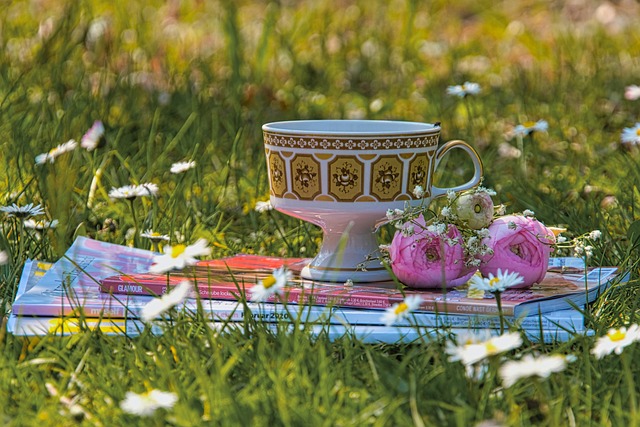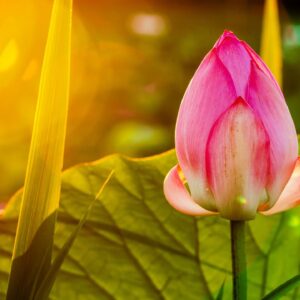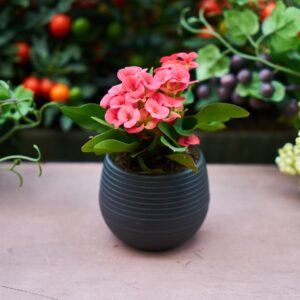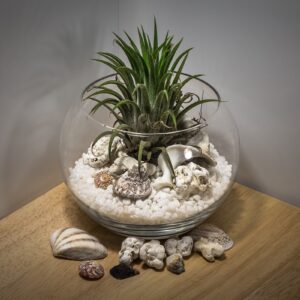Are you tired of bringing home beautiful houseplants only to watch them wilt and die within a few weeks? Don’t worry, you’re not alone. Many people struggle to keep their indoor gardens thriving.
However, with a little bit of knowledge and effort, you can become a green thumb and enjoy the natural beauty and benefits of a healthy indoor garden.
In this article, you’ll learn about the key elements of houseplant care, including understanding your plants’ needs, providing adequate lighting, watering correctly, maintaining proper humidity levels, and troubleshooting common issues.
By following these tips and making adjustments as needed, you’ll be able to create a lush and thriving indoor garden that can enhance your living space and bring you joy for years to come.
So, let’s get started on nurturing a healthy indoor garden!
Understanding Your Plants’ Needs
It’s important to grasp your plants’ individual requirements to ensure they thrive. Each plant has its own unique needs when it comes to soil quality, light exposure, and fertilization schedule.
For instance, some plants require more water than others, while some need to be kept in direct sunlight for several hours each day. When it comes to soil quality, it’s crucial to choose the right type of soil for your plants. Some plants require well-draining soil, while others prefer soil that retains moisture.
Additionally, fertilization schedules should be tailored to each individual plant. Some plants require fertilization every few weeks, while others only need it once a month. By taking the time to understand your plants’ individual needs, you can ensure they receive the care they need to thrive and grow.
Providing Adequate Lighting
Making sure your plants get enough light is crucial for their growth and survival, so imagine your plants basking in the warm sunshine of a bright, cheerful day. But what if your indoor space doesn’t get enough natural light? Don’t worry, you can still provide adequate lighting for your plants by choosing appropriate bulbs and managing their light exposure.
When it comes to choosing bulbs, fluorescent lights are a popular choice for indoor gardeners. They’re energy-efficient, emit a bright, white light, and are affordable. Full-spectrum LED lights are also a great option as they provide a similar light spectrum to natural sunlight.

Make sure to choose bulbs with the appropriate wattage for your plants’ needs and replace them every six months to ensure they’re still producing enough light. Additionally, managing light exposure is important to prevent your plants from getting too much or too little light. Place your plants near a window with indirect sunlight or use a timer to ensure they get the appropriate amount of light each day.
Watering Your Plants Correctly
To ensure your plants thrive, you need to water them correctly by giving them enough water without drowning them and allowing the soil to dry out slightly before watering again.
Overwatering prevention is crucial in maintaining a healthy indoor garden. One way to prevent overwatering is to check the soil moisture level regularly. Stick your finger about an inch deep into the soil, and if it feels dry, it’s time to water. If it’s still moist, wait a few more days before checking again.
Another way to prevent overwatering is to use a well-draining soil mix. This type of soil allows excess water to drain out, preventing the roots from sitting in water for too long.
When watering, make sure to water the soil directly and avoid getting water on the leaves, as this can lead to fungal growth. Remember, it’s better to underwater than overwater, so always err on the side of caution when watering your plants.
With proper soil moisture management, your indoor garden will thrive and flourish.
Maintaining Proper Humidity Levels
Maintaining proper humidity levels is key for your plants to thrive and avoid issues like dry leaves or fungal growth. Indoor plants require a certain level of humidity to mimic their natural environment. A humidity meter can help you monitor the humidity levels in your home and adjust accordingly.
Ideally, your plants need a humidity level between 40-60%. If the humidity level is too low, you can increase it by misting your plants regularly or placing a tray of water near them. Alternatively, you can invest in a humidifier to help maintain the desired humidity level for your plants.
Misting your plants is a great way to increase humidity, but it’s important to do it correctly. Mist your plants lightly and only when necessary to avoid fungal growth or other problems. You can also use a spray bottle with a fine mist setting to ensure that the water droplets are small enough to be absorbed by the plants without creating excess moisture.
With proper humidity levels, your indoor plants will be able to thrive and grow beautifully.
Troubleshooting Common Issues
If your plants are struggling, it’s time to play detective and uncover the root of the problem in order to get them back on track, like a horticultural Sherlock Holmes.
One common issue that indoor gardeners face is pest control. Whether it’s spider mites, aphids, or mealybugs, these tiny invaders can wreak havoc on your plants. The key to effective pest control is to catch the problem early and take action immediately.
Regularly inspecting your plants for signs of infestation, such as yellowing leaves or sticky residue, can help you catch the problem before it spreads. If you do find pests, there are a variety of natural and chemical treatments available, ranging from neem oil and insecticidal soap to diatomaceous earth and pyrethrin sprays.
Another common issue that indoor gardeners face is soil management. Overwatering, underwatering, and soil that is too compacted can all contribute to plant problems. When watering, it’s important to make sure that the soil has adequate drainage, and to avoid letting the plant sit in standing water.
To prevent soil compaction, consider adding perlite or vermiculite to your soil mixture. Additionally, using a high-quality potting mix that is formulated for indoor plants can help ensure that your plants are getting the nutrients they need.
By addressing these common issues in your indoor garden, you can help ensure that your plants are healthy and thriving.
Frequently Asked Questions
Can I use tap water to water my indoor plants?
Yes, you can use tap water to water your indoor plants, but it’s important to consider tap water safety.
Chlorine and fluoride are often added to tap water, which can be harmful to some plants. Additionally, tap water can contain minerals and salts that can build up in the soil and harm plant roots over time.
To ensure your plants stay healthy, consider using alternative watering options such as filtered water or rainwater. You can also let tap water sit out for a day or two before using it to water your plants, which can help some of the chemicals and minerals dissipate.
It’s important to pay attention to your plant’s individual needs and adjust your watering routine accordingly.
How often should I fertilize my indoor plants?
Fertilizing your indoor plants is crucial for their growth and overall health. Did you know that, according to a recent study, 85% of indoor plants suffer from lack of proper nutrition? To avoid this, it’s important to fertilize your plants regularly.
The frequency of fertilizing depends on the type of plant and the type of fertilizer used. Generally, most indoor plants require fertilization once a month during the growing season, which is typically spring and summer. However, some plants may require more frequent fertilization. Make sure to read the label on your fertilizer to ensure you’re following the correct instructions.
Remember, proper fertilization helps your plants thrive and stay healthy, so don’t skip this important step in indoor plant care.
What are some common diseases that affect indoor plants and how can I prevent them?
Preventing plant diseases is crucial if you want to maintain a healthy indoor garden. There are several common diseases that affect indoor plants, such as powdery mildew, root rot, and leaf spot.
These diseases can be identified through early warning signs, such as discolouration, wilting, and mould growth. To prevent these diseases from spreading, it’s important to practice good plant hygiene. This includes regularly cleaning your plants and ensuring proper drainage.
Additionally, avoid overwatering your plants and make sure they have adequate air circulation. By taking these preventative measures, you can keep your indoor plants healthy and disease-free.
Can I grow vegetables and herbs indoors and if so, how?
Are you looking to grow vegetables and herbs indoors? You can easily cultivate fresh produce right in your own home with the right indoor gardening techniques and vegetable container gardening.
Start by selecting the right size container, with proper drainage, for your chosen plants. Choose a sunny location, or invest in a grow light, and use a high-quality potting mix.
Keep your plants well-watered and fertilized, and watch for any signs of pests or disease. With patience and care, you can enjoy the taste of homegrown vegetables and herbs all year round.
How do I know when it’s time to repot my indoor plants?
Knowing when it’s time to repot your indoor plants can be crucial for their health and growth. Signs of root bound plants include visible roots growing out of the drainage holes, stunted growth, and dry soil that doesn’t absorb water as easily.
To choose the right pot size, consider the plant’s current size and growth rate, as well as the amount of space it needs to spread its roots. Remember that a pot that is too big can hold too much moisture, leading to root rot, while a pot that is too small can restrict growth and cause the plant to become root bound more quickly.
By keeping an eye on the signs and choosing the right pot size, you can ensure that your indoor plants have ample room to grow and thrive.
Conclusion
Congratulations! You’ve learned how to nurture a healthy indoor garden. By understanding your plants’ needs, providing adequate lighting, watering correctly, and maintaining proper humidity levels, you’ll have a flourishing indoor garden in no time.
Remember, your plants are living beings that need your care and attention. Just like you, they need the right balance of light, water, and nutrients to thrive. So, take the time to observe and learn about your plants’ unique needs.
With patience and persistence, you’ll become an expert at houseplant care. In the end, your indoor garden will not only bring life and beauty to your home, but also a sense of peace and tranquility.
As you watch your plants grow and flourish, you’ll feel a sense of accomplishment and pride. So, keep up the good work and enjoy the rewards of a healthy indoor garden!





